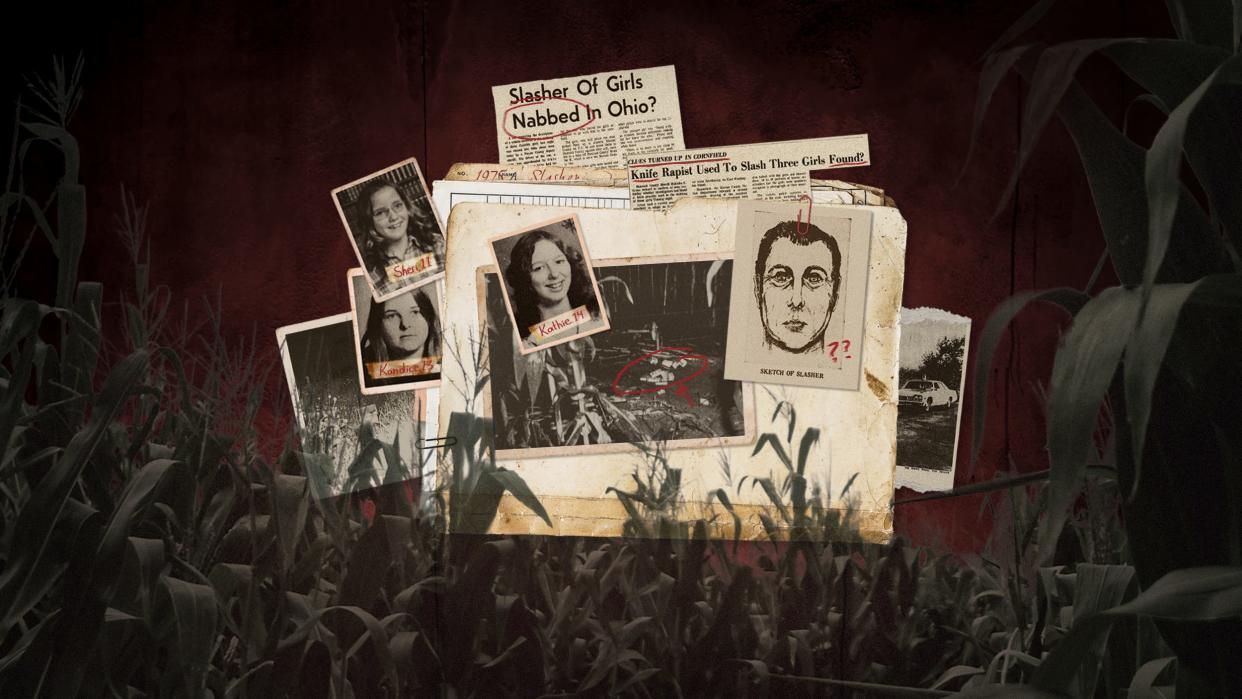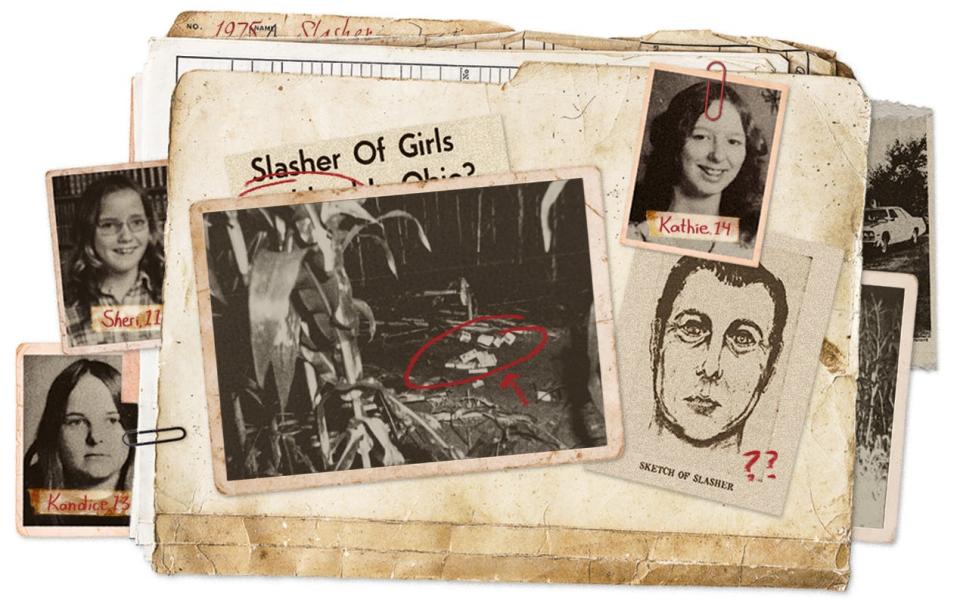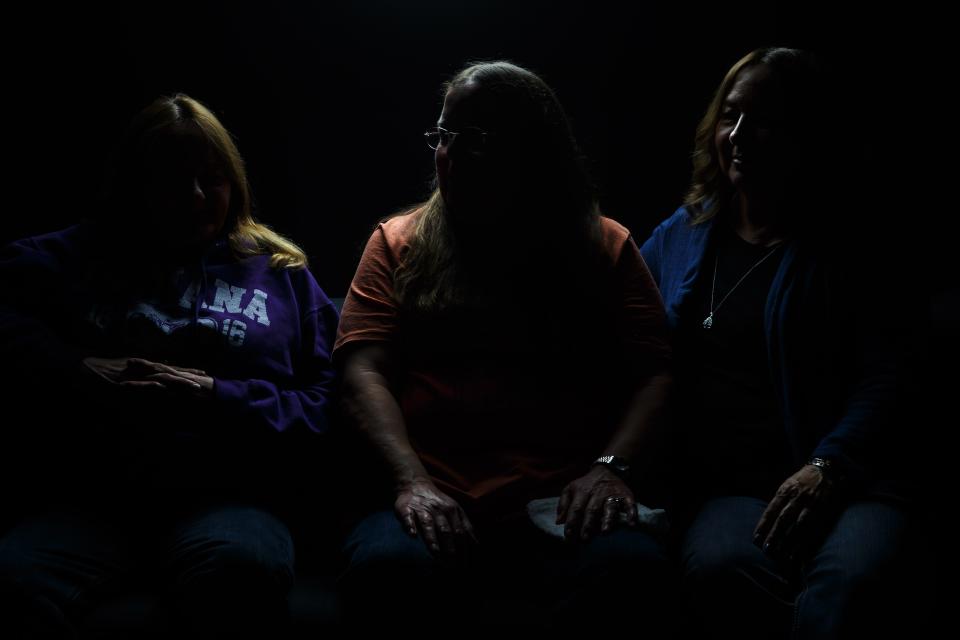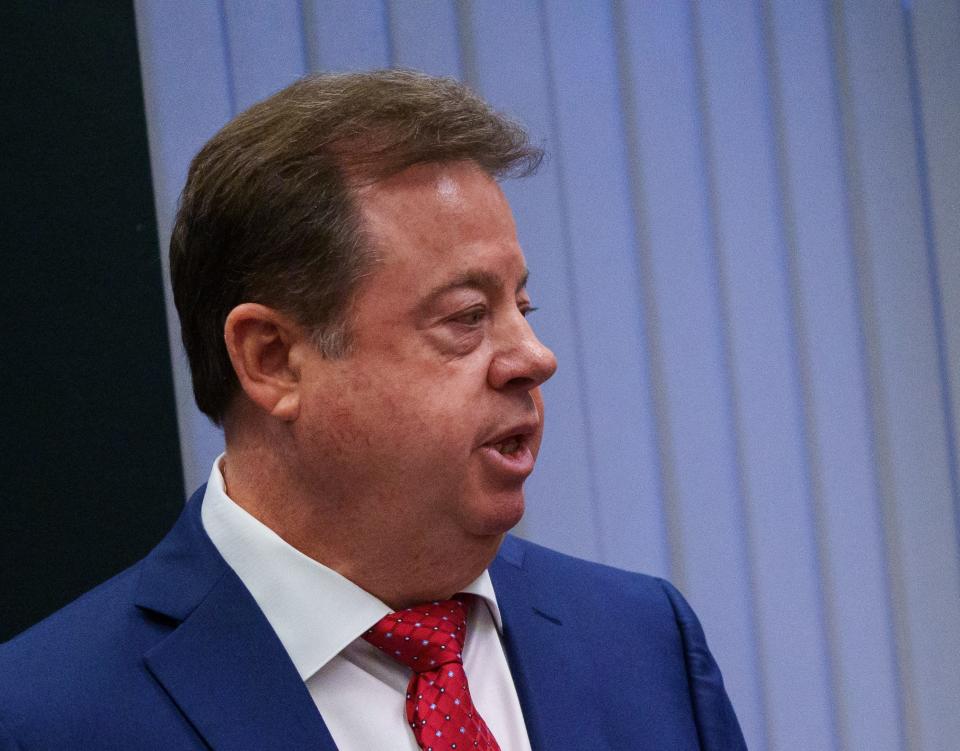‘Your case is NOT forgotten.’ But it keeps turning up cold.

Kathie Rottler slouched in a chair at the Indianapolis Metropolitan Police Department in 2003. She was waiting on a detective.
Tense, frustrated, Kathie stared at a photo on the wall of the Indianapolis skyline at night. Most people who saw the photo probably noticed the brilliant city lights, the skyscrapers. But at 43, all Kathie saw was the darkness. All she thought about were the crimes happening there.

She’d lived through one of them.
Since Aug. 19, 1975, Kathie had been unable to shake the memory of the monster who had raped her little sister and kidnapped and stabbed her, her sister and a childhood friend.
Multiple surgeries and time had obscured most of the three women’s external scars. But their internal struggles remained.
Every time a woman was found dead, Kathie worried the man who hurt them had claimed another victim. Every time a cold case was solved, she regretted theirs was not. She wondered when it would be their turn.
The women had spent decades not knowing who he was or where he might be.
Kathie hoped one day her pleas for help would be heard.
‘If you don’t swing, you can’t hit’

In 2018, Kathie’s efforts led her to Detective Sgt. David Ellison, who ran the Indianapolis Metropolitan Police Department’s cold case homicide unit.
Ellison had spent roughly a third of his three-decade career investigating such cases.
His unit examined unsolved homicides from the former Indianapolis Police Department and the law enforcement division of the Marion County Sheriff’s Office that lingered from before they merged into IMPD. Going back to 1990, Ellison guessed, there were about 1,000 unsolved cases. More joined the list every year.
When Ellison met Kathie, his unit consisted of three people: himself and two others.
He said they fielded more than 100 calls a year from families seeking justice. Each inquiry required time – to review notes from the original investigator, check evidence and determine whether more could be done.
“Everybody’s calling and saying, ‘What are you doing on my son’s case?’” Ellison said. “You know, the truth is there’s not much of anything being done unless new information comes in.”
Ellison said he was actively working three cases at any given time while peripherally juggling a few others. Additional cases sat to the side, where they’d remain unless police found additional evidence or a new witness came forward.
Ellison often taped photos of the victim to the box or case file to remind himself that each was more than a stack of papers – it was a person. He understood the pain of losing a loved one. His wife of nearly 22 years had died suddenly in 2009 of a heart problem.
“I want my legacy to be that I gave it my all while I was here,” he said, “and I did the best I could.”
Technically, Kathie’s case didn’t even fit the parameters of Ellison’s unit. No one had died.
But Ellison flipped through the wrinkled police records Kathie had brought with her in a manila folder. He listened to her story. And he promised to try.
“I work under the premise if you don’t swing, you can’t hit,” Ellison said, “so we’re swinging in the likelihood that there’s nothing there, but we’re going to try and hope.”
DNA testing

Ellison copied Kathie’s records and told her to call him back in a month.
Then he followed the same procedure as with his unsolved homicides: pull the case file and evidence, and figure out what, if anything, he could do.
The detective wasn’t optimistic. The case was nearly half a century old. Multiple police agencies had investigated it. Some had moved offices in the decades since the crime. Ellison had seen other old files destroyed by water damage from leaky pipes.
Luckily, his search turned up the work of Steven Gibbs, the former detective sergeant with the Marion County Sheriff’s Office who had tried to solve Kathie, Kandice and Sheri’s case in 1990 – 15 years after the crime. Gibbs had pulled microfilm and reconstructed the girls’ case file with records and interviews.
Ellison also located the physical evidence; it was in a box locked in an evidence vault at the Hancock County Sheriff’s Office. The evidence log listed 54 items collected in 1975, including blood spots, rope, a knife, a Marlboro cigarette butt, the girls’ clothes and samples taken from Sheri during a medical examination.

His next step was a no-brainer: DNA testing.
The powerful forensic tool had not existed when the girls were attacked in 1975. Fifteen years later, when Gibbs launched his cold case investigation, the testing was not yet readily available to law enforcement. And for years after it became accessible, Ellison said DNA testing was cost prohibitive for cold cases. That changed in Indianapolis in 2008, he said, when IMPD received grant money for DNA testing in unsolved cold cases.
Ellison hoped analyzing evidence in Kathie, Kandice and Sheri’s case might bring a new lead.
In January 2019, the women provided him with their DNA, and Ellison submitted the evidence to Marion County Forensic Services Agency for testing.
In a perfect world, the detective said, he also would have created a longer to-do list for the women’s case, reinterviewing people and seeking new information. But time was a luxury he didn’t have.
“I’m working cases that are murders and trying to put somebody in jail,” Ellison said. “And I’ve got cases that are close, so I can’t break free from those. Because if I’m working four things and juggling, I’m getting nowhere on any of them.”
A waiting game

Ellison felt he was doing the best he could. But to Kathie, then 58, it looked too much like what she’d experienced in the past – promises to call, promises to take steps, then silence.
The rest of 2019 ticked by. And half of 2020.
“Just checking in to see if you have anything to share?” Kathie emailed Ellison on June 26, 2020.
“No news from the lab, 105 homicides this year so far,” he replied. He told her he’d check but that officials there always let him know when something was done.
Kathie heard little over the next year.
By July 2021, she could no longer suppress her irritation. Kathie fired off a lengthy email to Ellison asking about the status of the case and why it was always her reaching out to him first.

“For the past 46 years, I have had to live with not just what happened that night to me but also to my baby sister and our friend,” she wrote. “I have also had to live with the fact that the case is just sitting there. At times it felt like I was on some type of crazy roller coaster ride.
“There have been so many names across my case, yet the majority of them played with my emotions. They’d give me hope just to shoot it back down again. I've always tried to show everyone respect and trusted them to be doing all they could to solve our case. But I don’t feel that I have been given the same respect.”
Kathie said it felt like she was being put off. She explained that, as it related to the investigation, Ellison was dealing with her 14-year-old self, not her 60-year-old self. And each time she had to call him, her mind replayed the trauma of what had happened.
“I’m not saying you are the only one to blame for this,” she wrote. “I have been treated this way for 46 years and I am tired of it. I am not going away and I am not giving up.”
‘Your case is NOT forgotten’

Ellison understood Kathie’s frustration.
“I never took it personal,” he said. “When victims’ families call, they’re looking for somebody to vent at, and I was used to it. So I took it in stride.”
He and Capt. Roger Spurgeon, IMPD’s homicide branch commander who Kathie had copied on her email, tried to reassure her that progress was being made.
Spurgeon told Kathie the lab had recently moved her case to stage two testing, which involved searching evidence for skin cells or DNA. But he couldn’t say how long that would take. The lab prioritized processing current violent crime cases that were prosecutable, Spurgeon said, and Ellison needed to prioritize solving murders.
“We simply cannot provide you with a timeline of when your case will be brought to resolution,” Spurgeon wrote to Kathie on July 16, 2021. “What we CAN provide you with is the peace of mind (hopefully) that your case is NOT forgotten, and we will utilize any current technology that did not exist when this occurred to help get the answers you deserve.”
Later that year, after more than two years of waiting, Ellison received some good news.
He said the lab had obtained enough DNA from the evidence to build a full profile of the suspect. Forensic scientists had matched DNA from the suspect’s semen to other evidence that was close to, but independent of, the crime scene. Ellison declined to say what that evidence was.

Officials sent the suspect’s DNA to a national database called the Combined DNA Index System (CODIS), where submitted profiles are searched against other known DNA profiles.
It was a dead end.
The man’s profile did not match any known offenders or any other unsolved cases in the database, Ellison said. Maybe the suspect had been locked up before CODIS started. Maybe he hadn’t committed other crimes or hadn’t been caught. Maybe he was dead.
Ellison turned back to the original case file. What about the man police had identified back in 1975, the one Kathie and Kandice had pointed out in a police lineup? He was dead, but in 2021 Ellison located the man’s son, who agreed to provide DNA for comparison. No match; his father was innocent.
In 2022, Ellison considered another suspect: an Indianapolis man who police believed had kidnapped and murdered two young women and a child in 1977 before accidentally killing himself. That man had lived close to where Kathie, Kandice and Sheri were abducted. Ellison found members of the man’s family in Ohio and compared their DNA to the evidence.
Again, no match.
By then, it had been four years of starts and stops. Four years of waiting. But Ellison wasn’t ready to give up.
To read the rest of this series, click here.
This article originally appeared on USA TODAY: ‘Your case is NOT forgotten.’ Case turns cold but victim won't give up

